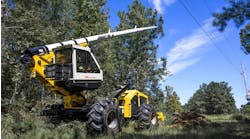A recent response from a fleet training manager to my June article, Which do you prefer: competency or experience?, suggests that despite advances in computer- and web-based learning, today's technicians continue to demand more hands-on in their training sessions. This is in line with what I see in the equipment industry, as well.
There is quite a bit of evidence to support live, in-center training for service technicians. Among this:
- Technicians are psycho-motor learners.
- Technology-based training is often poorly designed and fails to hold the learner's interest.
- Technician-students prefer the intimacy and relevant feedback provided by a live instructor.
Many companies have gone to live webcasts or web meetings with varying success.
Technology now exists for the web trainer to "see" when a remote student goes off the main screen and is doing other computer activities. But while this provides an advantage to the trainer, it doesn't address the larger issue of how technicians prefer to learn.
In-center training sessions, however, still tend to have a lot of "information transfer" material that does not need to be included in that portion of a technician's learning.
Blended Learning
Most organizations that still employ live training have nonetheless gone to some form of blended learning. This allows a portion of the material, typically that covering strictly knowledge-based objectives, to be pulled out of a live class and moved into one or more self-study formats.
Advantages to the blended solution include travel cost savings for the trainer, as well as possible schedule streamlining. For example, reducing a three-day in-center class to two days would allow two classes to be run in the same week.
Blended learning also reduces the classroom time that is not devoted to some form of student activity, making a better use of valuable in-person training time.
Distinct Teaching Challenges
A disadvantage to the blended solution is the up-front design and development time that must be dedicated to the self-study portions of the training solution.
Focusing on more hands-on training in the live sessions also puts some burden on course developers. Designing relevant hands-on activities in a "lab" environment, possibly with vehicle "bugs" for diagnostic activities that are realistic but not damaging to the equipment, can take considerable up-front time.
Material costs can also run high if components like engines, transmissions, axles and such are needed.
Program Shelf Life
A good rule of thumb when considering reducing in-center training time in favor of self-study is the shelf life of the program. If the program will only be run for a short time (typically less than a year), investing a lot of time and money to reduce a day's travel costs may not be advantageous.
For programs that will have longer durations, the travel savings will likely surpass upfront design and development costs after a year or more of continually running the class.
The solution for your fleet operation likely depends on a number of factors. Analyzing what you really need to get out of the training and the related ROI is a good start to deciding what will work best for your technicians.




